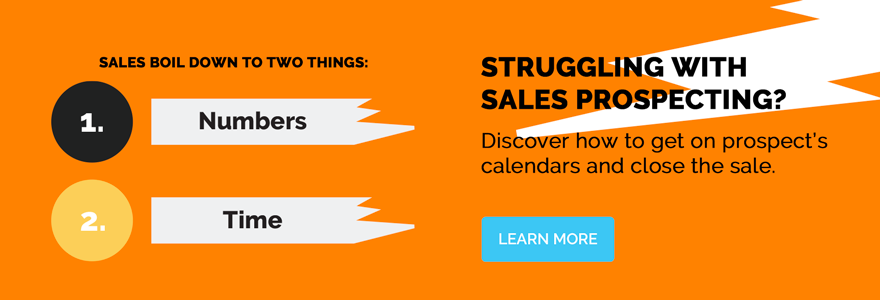How Not to Close: Ancient Sales Closing Techniques That Need to Stop
Up until very recently, a sales close was considered to be the ultimate make or break moment. Your superiors, industry professionals, your sales managers have all set you out on a sales journey with a predetermined destination innumerable times. The destination is the one where you get your customers to close the deal. There’s no other way.
That entire approach is now obsolete. The approach where you take your customers through every step of a sales cycle and ultimately get them to buy your product or service is the traditional way of doing things. I mean, let’s face it. That only worked because buyers had very few options or very few ways to buy then. Markets were smaller, every seller had the same thing to say and the transactions were a result of the lack of a better option.
Buyers now have access to so much more information. There are more options available where companies and sellers have something new to say or simply a new way to say it. Sales reps who have the ‘always close a deal’ mindset are more often turned down than taken seriously. The modern sales process demands change. It demands deep-rooted problem solving, education, and mutual decision-making.
Prospects shouldn’t be closed. They should be taken through an educational process of which the natural conclusion is a cohesive agreement that is collaterally achieved because of education.
The 7 techniques that have gradually become a no-no are outlined below:
The Assumptive Close
What it is: In this method, the salesperson assumes that the buyer has agreed to buy even though it hasn’t been precisely said so. Going ahead and asking your prospects questions like, ‘So how about we pick a date to set you up?’ after bluntly assuming they’re locked in adds unnecessary pressure on them.
Why it’s outdated: Assuming your prospect has agreed and talking about the next steps can instantly make them defensive. They’re being put in a tight and embarrassing spot and you could forego the deal altogether. Customers don’t want to be made to feel like they weren’t fully part of the conversation.
The Alternate Choice Close
What it is: This is a far trickier close than the assumptive close. Here, the seller directly presents the buyer with two options, i.e. Product A or B assuming the buyer will buy at least one of the two products.
Why it’s outdated: The technique is pushy and assertive and a buyer can perceive it to be desperate and it could even backfire with a complete loss of interest at the buyer’s end.
The Sales Contest Close
What it is: This close has the salesperson offering a customer a freebie or a discount or just something extra making they’re prospect conscious that they are close to winning a sales contest. It’s a way of shifting the focus from the prospect’s problem to the salesperson’s race for the No. 1 spot.
Why it’s outdated: No prospect is bothered about a sales contest and will not buy a product for someone else’s benefit. He wants to know that this purchase is beneficial to him and actually solves his problem. It also sets the wrong expectations in the long run.
The Something for Nothing Close
What it is: A lot like the Sales Contest Close, the sales rep offers a potential customer something free or at a reduced price or maybe even in the form of a rebate.
Why it’s outdated: This close doesn’t work for three main reasons. The profitability of a deal is marked down with the discount. The possibility of an up-sell is severely compromised. A bad precedent is set for the future and the desperation comes across prominently.
The Cradle to Grave Close
What it is: In this closing technique, the salesperson cuts the ‘too soon to buy’ objection made by a prospect. The usual response is that there is no perfect time to make a big purchase and that they should just give it a shot now.
Why it’s outdated: Dismissing the prospect’s understanding of his own needs is extremely wrong only for the purpose of closing a sale. There could be a wrong time to purchase and the prospect is perhaps not convinced yet. It unnecessarily creates a sense of urgency. An aggressive take in this case might be ill-timed and is disrespectful to the client.
The Sharp Angle Close
What it is: This close is used when a consumer asks a question related to the product. The question could be something like ‘Can you deliver within three weeks?’ The response is on the lines of ‘If I guarantee this, do we have a deal?’.
Why it’s outdated: This move doesn’t work because the prospect is still trying to understand the benefit of your product, everything the purchase entails, and if it suits his needs. If you push for a sale while they’re still learning, they could lose interest since the seeming need of the seller is to just make a sale no matter what it takes.
The Takeaway Close
What it is: Here, if the prospect shows any reluctance regarding the price, the salesperson offers to reduce the price at the cost of something that is a priority for the prospect in making the deal. I.e. If the prospect needs some modifications or after-sale service, the sales rep would take that away and offer a discount.
Why it’s outdated: This could seriously damage the situation. The buyer could just end the conversation saying he would opt for another company since his priorities can be met. Eventually, you’re in a soup because if you go back on your word, it seems like the buyer’s needs were never a priority.
In conclusion, traditional sales closing techniques are redundant and very precarious. Using those in modern times only does harm. A mutually beneficial transaction is so much better than one where a prospect is tricked into buying. Being honest and showing that you want to help can build trust and a sense of security in the relationship. It’s also the right thing to do!
Table of contents
Share this
You May Also Like
These Related Stories

8 Surefire Ways Your B2B Tech Company Can Close More Sales

Why Your Salespeople are Busy and Not Productive



